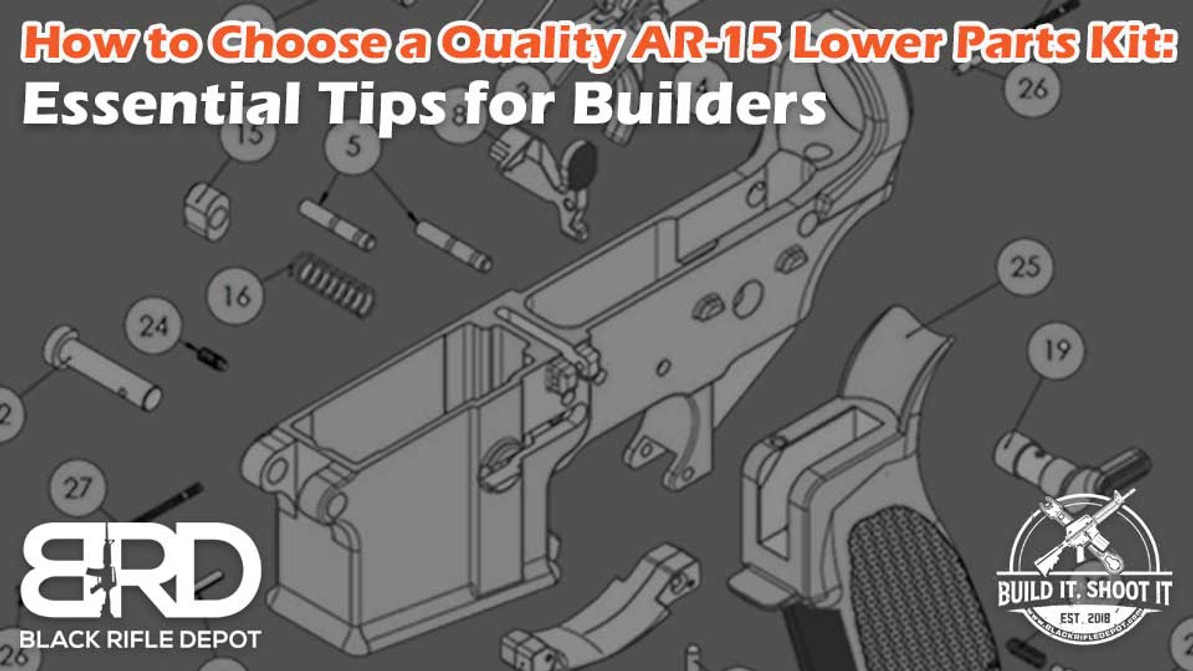How to Choose a Quality AR-15 Lower Parts Kit: Essential Tips for Builders
Choosing a high-quality AR-15 lower parts kit (LPK) is critical for anyone building or upgrading their rifle. With many options available, it’s essential to understand what to look for and how each component affects the firearm’s performance, reliability, and longevity. A solid LPK can differentiate between smooth, dependable operation and frustrating malfunctions or safety issues. In this guide, we’ll explain everything you need to know about picking the right lower parts kit for your AR-15, covering components, materials, and recommended brands. Whether you’re building for competition, hunting, or home defense, we’ll help you prioritize which features to look for based on your needs. By the end, you’ll know how to choose a kit that fits your budget and meets the demands you’ll place on your rifle. Let’s dive into the details and make your AR-15 build a success!
Understanding the Role of Each Component in a Lower Parts Kit
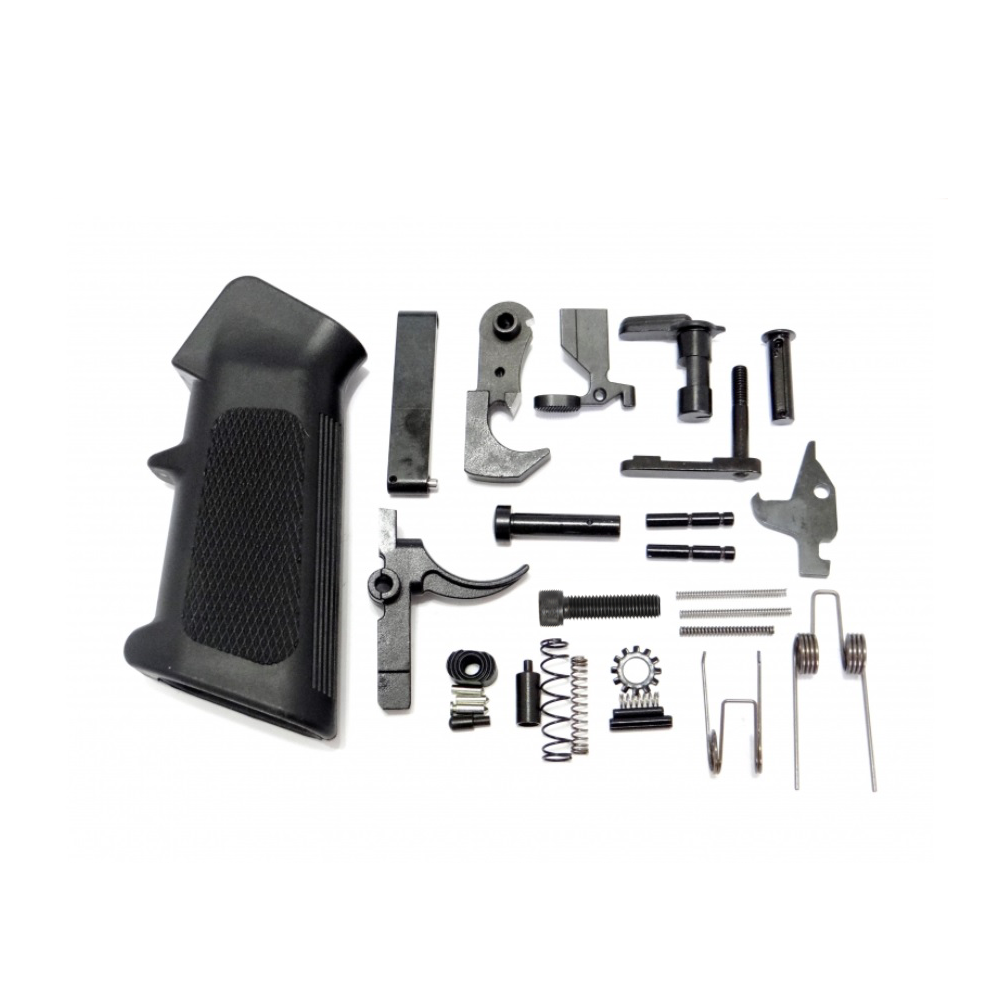 Each AR-15 lower parts kit (LPK) component uniquely ensures the rifle operates safely, reliably, and comfortably. Even though these parts are small, they’re essential for smooth performance and a successful build. Here’s a breakdown of the critical parts and their functions:
Each AR-15 lower parts kit (LPK) component uniquely ensures the rifle operates safely, reliably, and comfortably. Even though these parts are small, they’re essential for smooth performance and a successful build. Here’s a breakdown of the critical parts and their functions:
- Trigger: Controls the firing mechanism, converting the shooter’s pull into a shot. A high-quality trigger provides a smooth, predictable pull for accuracy and control.
- Hammer: The hammer uses the trigger to strike the firing pin, which ignites the cartridge. The hammer’s durability is vital for reliable ignition.
- Safety Selector: This critical safety feature enables or prevents the trigger from being pulled. Quality selectors offer a distinct “click” for confident engagement.
- Bolt Catch: This lock opens the bolt after the last round, making reloading smoother. A reliable bolt catch also ensures consistent operation when the magazine is empty.
- Magazine Catch and Release: This mechanism holds the magazine securely and allows it to be released for quick reloading. Proper fit and tension are essential to rapid, dependable mag changes.
- Detents and Springs: Tiny but essential, these parts keep the selector, bolt catch, and pins in place. Durable detents and springs prevent small part failures that could compromise performance.
Each part’s quality impacts the rifle's function and longevity, so choosing a durable LPK is essential for optimal performance. A dependable lower parts kit provides a strong foundation, ensuring your AR-15 operates smoothly, safely, and accurately.
Why Quality Matters in Lower Parts Kits
Quality is paramount when selecting an AR-15 lower parts kit (LPK), as lower-quality components can lead to frequent malfunctions, reduced durability, and potential safety risks. Low-quality triggers, for example, may have inconsistent pull weights or "gritty" feels, reducing accuracy and control over the firearm. A poor trigger may also be prone to wear faster, which could lead to accidental discharges or failure to reset, both of which present serious safety concerns.
Springs and detents are often overlooked but are crucial to reliable function. Cheap springs can lose tension quickly or even break under stress, which can cause the safety selector, bolt catch, or magazine release to fail unexpectedly. For instance, a weakened bolt catch spring may prevent the bolt from staying open after the last round, complicating reloads and reducing reliability in high-stress situations.
Similarly, detents made from low-grade materials may wear out or deform over time, compromising the function of critical controls like the safety selector. When controls don’t hold steady, the rifle’s reliability and safety are at risk. Investing in a high-quality LPK ensures that each component will hold up to regular use, providing consistency, longevity, and safety across every part of your AR-15 build.
Mil-Spec vs. Enhanced Parts: What’s the Difference?
Mil-Spec and enhanced AR-15 lower parts kits cater to different needs and preferences, offering distinct benefits in terms of reliability and customization. Mil-Spec kits are built to meet military specifications, ensuring reliable performance and standardized compatibility across AR-15 components. Mil-Spec parts like triggers, springs, and selectors are designed for durability and functionality in harsh conditions, making them ideal for those prioritizing reliability and simplicity in their build. These kits generally include a standard single-stage trigger, which is functional but lacks the refined pull and lighter break preferred by some shooters.
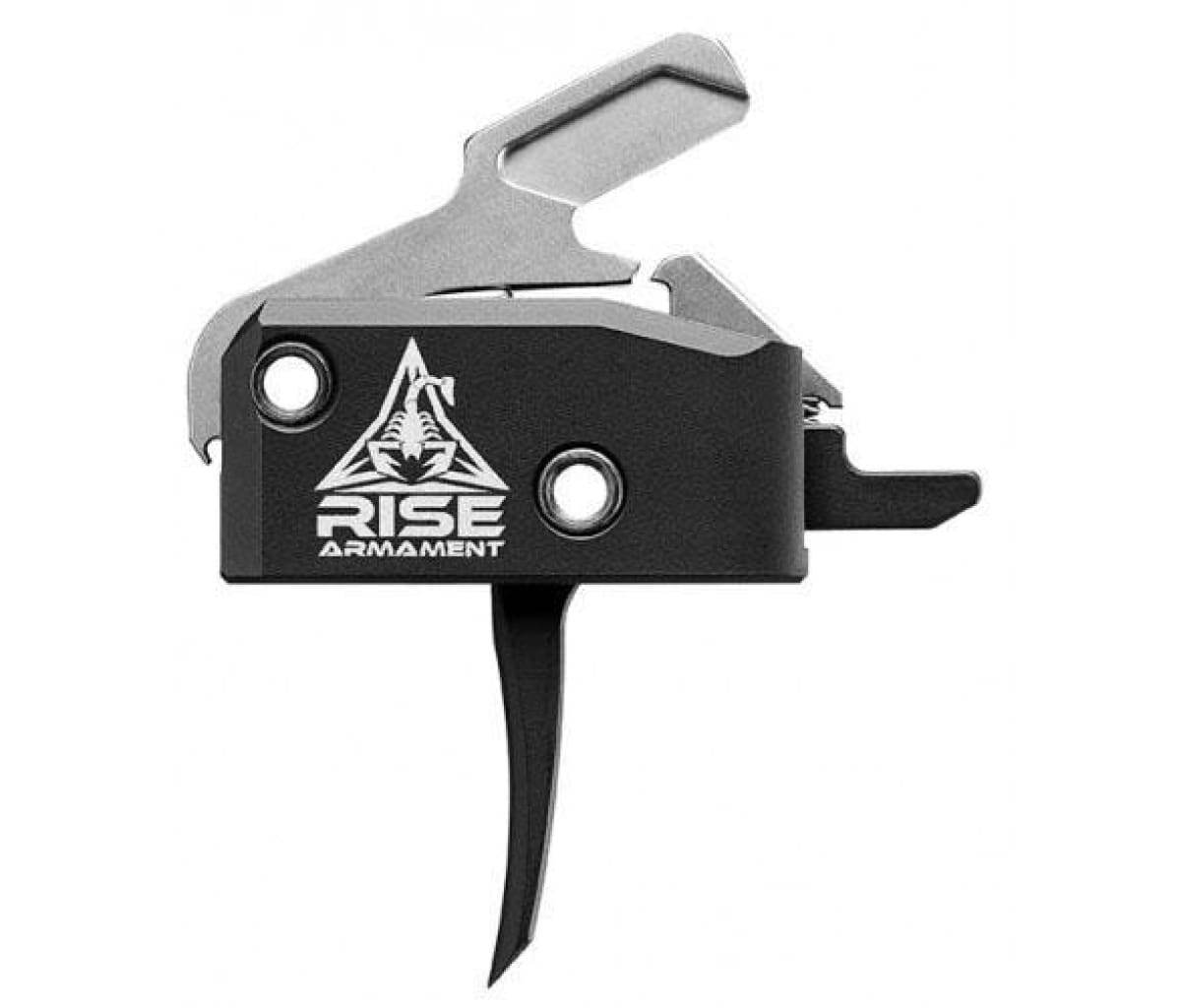 On the other hand, enhanced kits offer upgraded components for those seeking improved performance, comfort, or customization. Many enhanced kits feature custom triggers, which are often smoother and may include adjustable pull weights, providing a more tailored shooting experience. Drop-in triggers are also common in enhanced kits—they come pre-assembled, making installation easier and offering consistent pull and crisp breaks right out of the box. Drop-in triggers are typically two-stage or precision triggers, which improve control, making them ideal for target shooting, competition, or hunting.
On the other hand, enhanced kits offer upgraded components for those seeking improved performance, comfort, or customization. Many enhanced kits feature custom triggers, which are often smoother and may include adjustable pull weights, providing a more tailored shooting experience. Drop-in triggers are also common in enhanced kits—they come pre-assembled, making installation easier and offering consistent pull and crisp breaks right out of the box. Drop-in triggers are typically two-stage or precision triggers, which improve control, making them ideal for target shooting, competition, or hunting.
While Mil-Spec parts are dependable for general use and rugged environments, enhanced kits offer customization options for users looking to elevate their shooting experience with tailored triggers and upgraded components.
Materials to Look For in Lower Parts Kits
Choosing suitable materials for an AR-15 lower parts kit (LPK) significantly affects durability, performance, and ease of maintenance. Common materials used in quality LPKs include stainless steel, 8620 steel, and specialty coatings like nickel-boron and nitride.
Stainless steel is widely favored for its corrosion resistance and longevity, especially in components like springs and pins that undergo repeated use and exposure. It’s beneficial for shooters in humid or marine environments where rust can be an issue.
8620 steel, a durable alloy commonly used in fire control groups, offers an excellent balance of strength and wear resistance. 8620 steel components withstand extensive firing cycles without deforming or losing functionality when paired with a quality coating.
Nickel-boron and nitride coatings provide an extra layer of protection while enhancing the performance of moving parts. Nickel-boron, in particular, offers a slick, self-lubricating surface, which minimizes friction in triggers and safety selectors. This smooth operation is more comfortable and helps reduce the need for frequent lubrication. Nitride, a hardening treatment, improves surface durability on parts like the bolt catch and magazine release, making them more resilient against wear.
Using high-quality materials ensures that each part of the LPK is optimized for smooth function, reduced maintenance, and long-term reliability in demanding conditions.
Key Features to Prioritize Based on Purpose
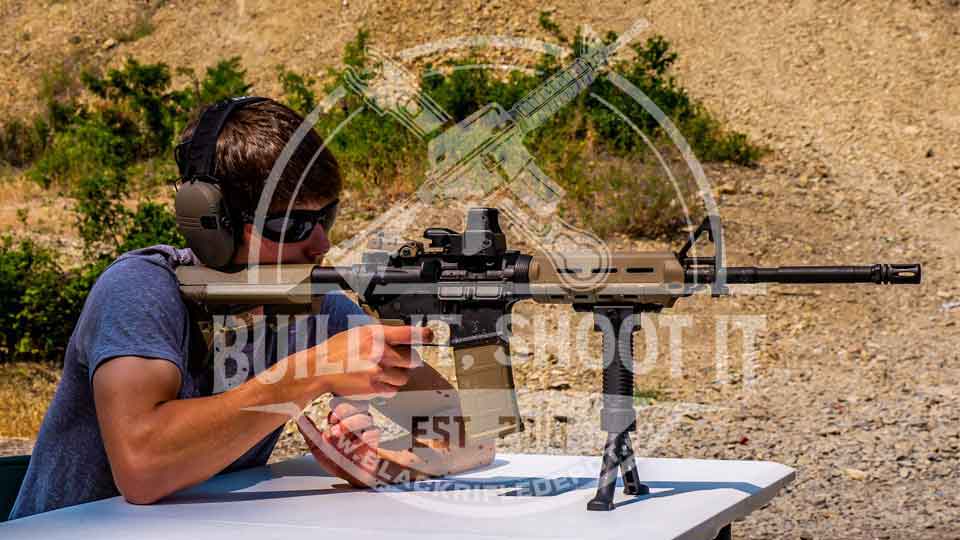
When selecting an AR-15 lower parts kit (LPK), you must prioritize features based on your intended use, whether competition shooting, home defense, or hunting. Different scenarios demand unique characteristics from components, so choosing the right features can significantly improve performance.
For competition shooting, prioritize kits with a precision or drop-in trigger featuring a lighter pull weight and a crisp break. Two-stage triggers are popular here, offering a controlled, predictable pull that enhances accuracy. Additionally, enhanced magazine releases and ambidextrous controls can speed up reloads and improve maneuverability under time constraints, giving shooters an edge in timed events.
Reliability and ease of operation are paramount in home defense situations. Opt for a Mil-Spec or enhanced kit with a single-stage trigger for simplicity and dependability. Ambidextrous controls, such as safeties and magazine releases, are valuable here, especially in tight spaces or high-stress situations where flexibility in control is essential. Enhanced detents and springs also ensure long-term reliability and reduce the risk of failure.
For hunting, lightweight and durable components are ideal. A smoother, slightly lighter trigger can improve precision for longer shots, while stainless or coated parts resist rust, crucial for field conditions. Enhanced safety selectors and bolt catches improve handling, especially when wearing gloves or in adverse weather.
Choosing an LPK tailored to your purpose ensures you get the most out of your AR-15, maximizing effectiveness and comfort.
Top Brands Known for Quality Lower Parts Kits
For those seeking reliable AR-15 lower parts kits, brands like Aero Precision, CMMG, and BCM are consistently recommended for their quality and performance. These manufacturers offer kits designed with precision, durability, and ease of use in mind, making them ideal choices for builds intended for a range of purposes.
The Aero Precision AR-15 Lower Parts Kit is a solid option for builders looking for Mil-Spec reliability with a straightforward assembly process. Aero Precision is known for its tight tolerances and quality control, ensuring all components fit seamlessly. This kit is excellent for general use and provides dependable functionality at a competitive price.
The CMMG AR-15 Premium Lower Parts Kit with Ambidextrous Selector is a versatile choice for shooters who want added control flexibility. Known for durability and enhanced components, CMMG’s ambidextrous selector is especially beneficial for left-handed shooters or those building for tactical use. CMMG’s parts are designed to last and perform well under rigorous use.
The BCMGUNFIGHTER™ AR-15 Enhanced Lower Parts Kit is highly regarded for its high-quality components and thoughtful design features. BCM includes upgraded elements, such as enhanced trigger guards and ergonomic design tweaks, ideal for those who prioritize comfort and durability in tactical or defensive settings.
Each of these kits offers distinct advantages but upholds the high standards for a reliable AR-15 build.
DIY Tips for Assembling a Lower Parts Kit
Assembling a lower parts kit (LPK) on an AR-15 can be a rewarding DIY project, but it requires careful handling of small parts and specific tools to ensure everything fits and functions correctly. Essential tools include a small hammer, punch set, and needlenose pliers. A bench block and roll pin punch are also helpful for keeping pins in place without damaging them.
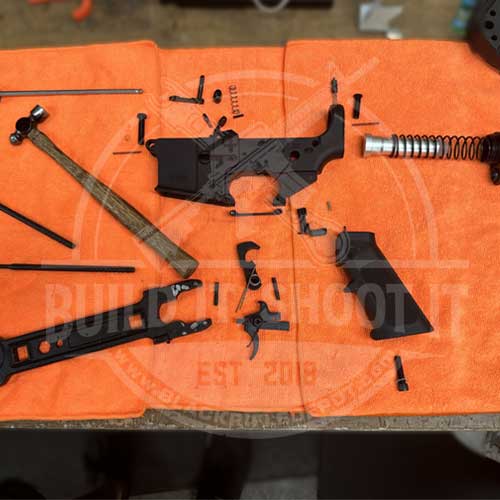 One common pitfall is
losing detent springs—these small parts are quickly launched across the room if not handled carefully. When installing the detent pins and springs, consider installing them inside a plastic bag to catch any parts that may slip. Over-tightening screws is another frequent issue, especially for the grip screw, which can strip threads or put unnecessary stress on the lower receiver. Apply gentle pressure and check the manufacturer’s recommended torque settings to avoid these issues.
One common pitfall is
losing detent springs—these small parts are quickly launched across the room if not handled carefully. When installing the detent pins and springs, consider installing them inside a plastic bag to catch any parts that may slip. Over-tightening screws is another frequent issue, especially for the grip screw, which can strip threads or put unnecessary stress on the lower receiver. Apply gentle pressure and check the manufacturer’s recommended torque settings to avoid these issues.
Following a step-by-step guide like this: How to Install an AR15 Lower Parts Kit: A Complete Guide for Beginners can be beneficial, especially if it’s your first time. The guide provides visuals and detailed instructions that make installation easier and reduce mistakes. With patience and the right tools, assembling your LPK can be a straightforward and enjoyable process that enhances your understanding of the AR-15 platform.
Budget Considerations: Where to Save and Where to Spend
When building an AR-15, balancing budget with quality is essential. Some lower parts are worth investing in, while others allow for some cost-saving without compromising performance. High-quality triggers and safety selectors are often expensive, especially if reliability and precision are priorities. Upgraded triggers, for example, provide a smoother pull and can significantly improve accuracy and control, which is crucial for hunting, competition, or defensive use. Similarly, investing in durable, corrosion-resistant springs and detents pays off long-term, as these parts experience regular wear.
On the other hand, more standardized components like trigger guards or magazine release buttons may offer a chance to save. Basic Mil-Spec options in these parts are generally reliable, allowing you to allocate more of your budget toward key performance-enhancing upgrades instead.
Ultimately, knowing where to save and where to spend helps build an AR-15 that aligns with your specific needs without overspending. By prioritizing quality in critical components and opting for more affordable options where feasible, you can create a dependable, high-performing AR-15 without breaking the bank. With a thoughtful approach to part selection and assembly, your AR-15 will be ready to meet the demands of any situation you encounter.
Recent Posts
-
Best AR-15 Handguards - MOE SL Handguard
In the world of AR-15 customization, handguards not only protect the barrel but are pivotal in enhan …Feb 5th 2025 -
Budget vs. Premium AR-15 Rifle Scopes: Are Expensive Optics Worth It?
When it comes to enhancing your AR-15's performance, selecting the right AR-15 rifle scope is crucia …Feb 2nd 2025 -
Top Lightweight Red Dot Sights for Minimalist AR-15 Builds
Choosing the right red dot sight for your AR-15 is more than just picking a well-known brand—it’s ab …Jan 30th 2025

